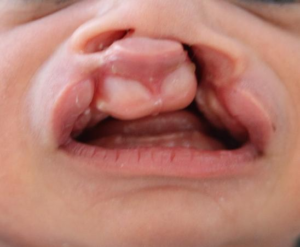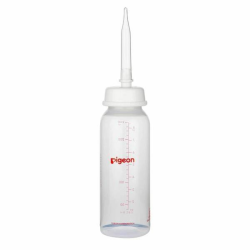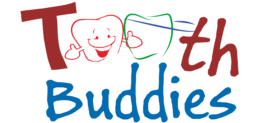Neonatal Care And Feeding Support For Babies With Clefts
Babies born with cleft lip and palate, like any other babies, need to learn how to feed successfully in order to thrive and grow. If the baby has a cleft lip only (with a normal palate), he/she should be able to eat normally using standard techniques. Babies with cleft lip only can even breastfeed, if you desire.
Why do babies with clefts have problems with feeding?
However, babies born with a cleft lip and palate, or cleft palate only, have an opening in the roof of their mouth- between the mouth and nose. This opening in the palate makes it difficult to create the suction needed to pull milk out of the bottle or to latch on to the breast to breastfeed. This means that babies with cleft palate are at risk for poor weight gain because they use a lot of energy to feed.
What will a pediatric dentist help my baby with?
The dental team will examine the baby for the type and extent of the cleft. Simple methods like lip taping will also help to bring the lip segments closer and make it easier for the surgeon to operate.

Our dental team is trained in handling neonates and infants for nasoalveolar moulding and we also offer counselling and feeding support.
Any loose neonatal teeth will be extracted, oral hygiene practices and feeding methods demonstrated to the caregivers, lip and/or tongue ties noted and released appropriately. As the baby grows, scar massage, transition to a finger brush, toothbrushing and gum massage will be supervised with emphasis on keeping the cleft site clean.
If the upper jaw is extremely misshapen, nasoalveolar moulding can be started early to help the baby’s jaw segments and nostrils align. This has to be started within a few days of birth and will be maximally effective till the baby is around 4 months old.

How do I feed my baby with cleft palate?
Babies with cleft palate usually need special bottles and techniques to feed well, whether or not they have cleft lip. It is rarely possible to breast-feed or use a regular bottle. With cleft palate, a baby cannot create suction to get milk out of the breast or bottle. A baby who is put to the breast may look like they are latching on and sucking well. But they are using up energy and getting little or no milk. If you planned to breast-feed, we encourage you to express your milk and feed your baby using a special bottle. Breast milk is considered the most ideal food for all babies. There are added benefits for babies with cleft palate, such as fewer middle ear infections.
What kind of bottle should I use for feeding with cleft palate?
There are 4 types of bottles for feeding babies with clefts:

Cleft Lip/Palate Nurser by Mead Johnson

SpecialNeeds Feeder by Medela

Pigeon feeder with one-way valve

Dr. Brown’s Specialty Feeding System with one-way valve
How do I care for the bottles and nipples?
All of these bottles and nipples can be hand washed in hot soapy water. Rinse and allow to air dry.
Do not boil the bottles or parts. Do not wash them in the dishwasher or put them in a microwave. They may soften and start to leak.
How do I know if my baby is feeding well?
Babies should be able to feed comfortably within a reasonable amount of time, without struggling to breathe, choking, or working very hard to get the milk out of the bottle. The feeding goal is to help the baby get the right amount of milk in the right amount of time, and to avoid taking in too much air. A feeding session should take no longer than 30 minutes. If it takes longer, your baby is working too hard and burning calories needed for growth.
Here are some simple guidelines:
- Use a specialized cleft palate bottle as demonstrated by your baby’s medical team.
- Place your baby in an upright, sitting position to prevent the formula from flowing back into the nose area.
- Keep the bottle tilted so the nipple is always filled with milk and pointed down away from the cleft. Your baby will move the nipple into the most comfortable position for him/her.
- As your baby feeds, some milk may escape through the nose. This is very common and expected, and it does not mean the baby is choking. Hold your baby in a more upright position as this will lessen the amount of milk coming through the nose.
- Babies with a cleft need to be burped more often because they take in more air while feeding. Watch for signs of discomfort; your baby will give you signs when it’s time to stop and burp.
How do I clean the mouth of my baby after a feed? Can I clean the cleft area?
Feeding is not the only activity that infants with cleft lips ± palates require special care. Oral care after feeding is also very important. Once the infant is finished feeding, the areas around the cleft should be cleaned with a clean washcloth. If food is left to accumulate it can mix with mucous secretions from the mouth and nose and form a hard crust that becomes a potential source for infection. To clean these areas, you can use clean water, or water with hydrogen peroxide. Place it on a wash cloth or gauze. If the cleft lip becomes dry, it can be moistened using mineral oil externally, without letting the mineral oil get into the infants mouth. Sugar intake of babies old enough to have teeth with cleft lip and palate is also a reason oral care is important. In patients with a cleft lip and palate it is more difficult to properly clean the maxillary incisors due to the clefting. Cleaning after surgery may also be a problem due to scar tissue and immobility.
When and how do I wean my baby (with a cleft) who is being bottle fed?
Spoon feeding for infants with a cleft lip ± palate should begin at approximately 6 months of age just as it would for children without a cleft lip and/or palate. Strained, thin pureed foods should not be a problem for infants with clefts. These infants should be introduced to spoon feeding to enhance normal development in the use of spoon feeding. When spoon feeding, avoid thickened foods to ensure that these consistencies do not get lodged in the cleft area. Furthermore, spicy foods should be avoided, due to the sensitivity of the nasal mucosa.
It may be appropriate to introduce and practice cup drinking preoperatively. If cup-drinking is desired postoperatively it should be introduced preoperatively even if it is at an early age. The infant should be help in an upright position, and an open cup should be used to release liquid into the infant’s mouth. The infant may do better handling a thickened liquid rather than their formula or juice. This should be practiced frequently and at short durations to be beneficial for the infant with a cleft condition.
